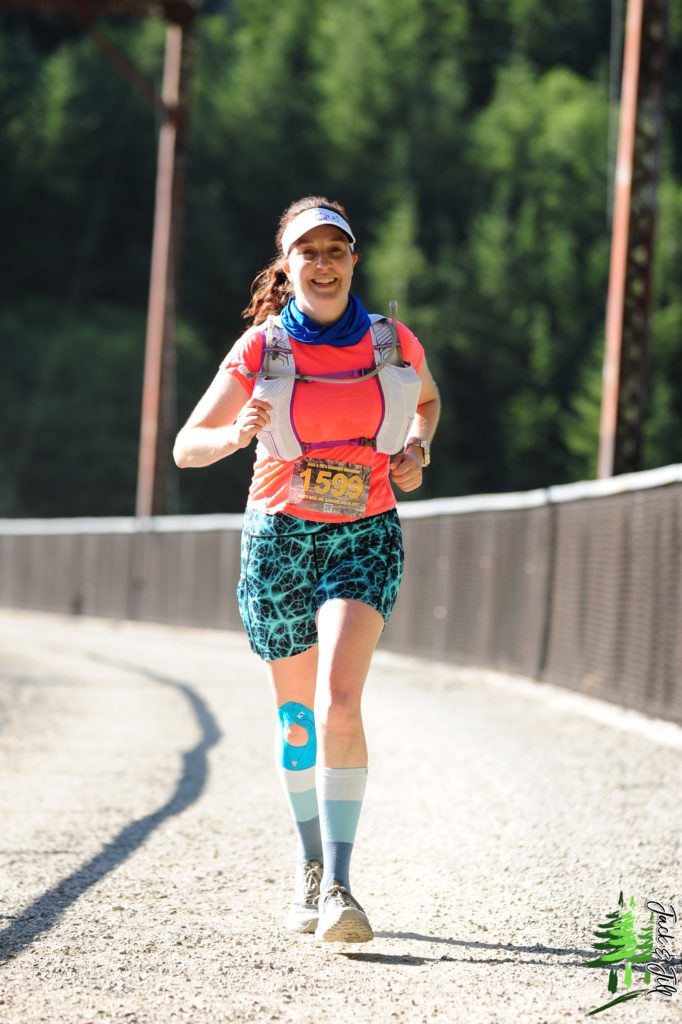I recently ran Jack and Jill’s Downhill Marathon. It was a gorgeous course that started at the Snoqualmie Tunnel and was a gradual decline all 26.2 miles down. If you’re like me you may be thinking “Yes! Running downhill sounds amazing!”
Well. Yes, the experience was great. However, running a marathon downhill was NOT something I was adequately prepared for. I did some hill training, but I wasn’t prepared for how tired my legs would be so early on. I wasn’t prepared for how sore I would be for days afterward. Yes, I knew the pain of running a marathon and the soreness that follows but this was next level! Let my pain be your gain with these tips for downhill running.

Why is running downhill so painful?
As runners, we tend to brace ourselves for running uphill because it’s so challenging, cardio-wise. We often welcome the relief of running downhill because we can recover our breath and it feels so easy!
However, as I learned, running downhill for a considerable length of time comes with it’s own challenges. Primarily, because running downhill is much harder on your muscles and joints. Rather than constricting, running downhill causes your muscles to elongate which takes more energy and causes more damage (think micro tears) to the leg muscles.
Many runners also naturally tend to lean back while going downhill, which is hard on the back, or look down at the feet which is hard on the neck.
Tips for downhill running properly
Focus on form is important while running downhill. Depending on the drop, you’ll need to employ different techniques, but in general the same rules apply.
Lean forward
If your running down a pretty good incline, you’ll feel a tendency to lean back. Instead lean slightly forward so that your body stays perpendicular to the ground, causing less stress.
Use your arms
When running uphill, you use your arms to “pump” and gain speed. Running downhill, your arms become more important for balance. Running a gradual decline like I did, this wasn’t as big of a factor, but I definitely used my arms more out to the side than I would running uphill.
Take shorter strides
You’ll feel extra speedy going downhill and feel like lengthening your stride to go faster. To alleviate stress on your joints and avoid injury from over reaching, take shorter strides. Shorter doesn’t have to mean slower, using short strides with a fast turnover can actually help with speed.
Pay attention to foot strikes
You always hear runners talk about the dreaded “heel strike”, which is never great, but when running downhill it’s almost like pumping the breaks. Focus on landing mid foot and landing lightly, no pounding down the hill.
Engage your core
Having a strong core is just a good rule for life. When running downhill a strong core is extra helpful in maintaining balance.
Training to run downhill
Make sure to incorporate lots of hills into your training plan if you’ll be running a downhill race. This can be hill repeats, long hills, rolling hills, you name it as long as you get plenty of experience running downhill. The best training is to look up your course and try to gradually work up to the same gradient you’ll be running on race day.
You might also like:
Leave a Reply